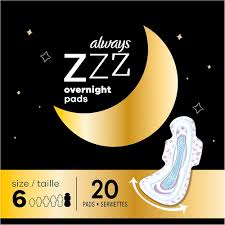Sleep is a vital part of our health. Yet, millions face a hidden problem called ZZZ leaks. These leaks often go unnoticed but can ruin sleep quality and harm health. Knowing what causes them and how to detect and prevent ZZZ leaks can make a big difference. Whether you’re a consumer, healthcare provider, or sleep product maker, understanding ZZZ leaks is essential for better sleep and safety.
What Are ZZZ Leaks?
Definition and Explanation of ZZZ Leaks
ZZZ leaks happen when air escapes during sleep in a way that interrupts rest or causes issues. They mostly happen with breathing devices like CPAP machines or masks. These leaks can be nasal, mouth, or around the face. It’s common for people with sleep apnea to experience ZZZ leaks, which can make treatment less effective or uncomfortable.
Common Causes of ZZZ Leaks
- Anatomical factors: Narrow or blocked nasal passages, deviated septum, or nasal polyps can cause leaks.
- Device issues: Improper mask fit, worn-out parts, or defective equipment often lead to leaks.
- Environmental conditions: High humidity or extreme temperatures can affect how well a device fits or works.
How ZZZ Leaks Affect Sleep Quality and Health
Leaks disturb sleep, causing tossing and turning. They can irritate skin, lead to dryness, and sometimes cause skin infections. For those with sleep apnea, leaks may hide or worsen breathing trouble. Over time, these issues can lead to fatigue, headaches, and even higher blood pressure.
Detecting ZZZ Leaks
Signs and Symptoms of Leaks During Sleep
- Hearing hissing sounds or loud air escapes.
- Waking up repeatedly or feeling restless.
- Noticeable moisture or skin irritation on your face.
Tools and Devices for Leak Detection
- Sleep tracking apps that monitor breathing and movement.
- Special sensors attached to nose or face to detect leaks.
- Formal sleep tests like polysomnography, done in sleep clinics, to find leaks accurately.
Expert Recommendations for Accurate Detection
Consult a sleep specialist who can review your symptoms and data. They may suggest using specific alarms or sensors. Proper monitoring over several nights often reveals patterns missed during individual recordings.
Causes and Contributing Factors of ZZZ Leaks
Anatomical and Physiological Factors
Structural issues like a deviated septum or allergies block the airways. Obesity can also make it harder for devices to seal properly, increasing leaks.
Equipment and Environmental Issues
- Masks that don’t fit well or are too loose.
- Incorrect device settings or old, worn-out parts.
- A room with dry air, high humidity, or poor airflow impacts device performance.
Behavioral Factors
Sleeping on your side or stomach might cause mask shifting and leaks. Irregular sleep routines or inconsistent use of your device can also lead to ongoing problems.
Prevention and Management Strategies
Optimizing Equipment Fit and Maintenance
Get your mask fitted by a professional. Make sure it’s the right size. Regularly clean your mask and replace worn parts. Proper maintenance keeps leaks at bay and ensures your device works well.
Addressing Underlying Medical Conditions
Treat allergies, sinus issues, or nasal blockages. Seek medical help if nasal congestion or structural concerns persist. Fixing these can reduce leaks significantly.
Sleep Environment Adjustments
Control room humidity and temperature to improve comfort. Losing weight and adopting sleep positions that don’t cause mask movement can also help prevent leaks.
Technological and Professional Interventions
Use advanced, leak-proof masks or devices designed for a better seal. Schedule regular check-ups with your sleep doctor. Sometimes, surgery may be needed to fix anatomical issues causing leaks.
Real-World Examples and Case Studies
- A patient with nasal polyps had trouble with leaks. After surgery, leaks disappeared, and sleep improved.
- A user experienced constant leaks due to ill-fitting masks. Replacing masks and adjusting fit made a big difference.
- Sleep clinics report about 30% of patients deal with leaks regularly. Proper fitting and device updates solve most problems.
Actionable Tips for Consumers and Healthcare Providers
- Clean your devices weekly and check fit often.
- Follow your provider’s advice for mask fitting.
- If leaks continue, don’t wait. Seek professional help.
- Improve sleep hygiene by sticking to a schedule and avoiding caffeine late at night.
- Keep a sleep journal to track issues and solutions.
Conclusion
Understanding ZZZ leaks is key to better sleep and health. Detecting leaks early and taking steps to prevent them can improve your rest and overall safety. Regular device checks, professional advice, and good sleep habits make a big difference. Don’t ignore leaks—they could be a sign your sleep needs help. Stay vigilant, stay safe, and sleep soundly.
Also Read: How Telepsychiatry Is Transforming Mental Health Access

